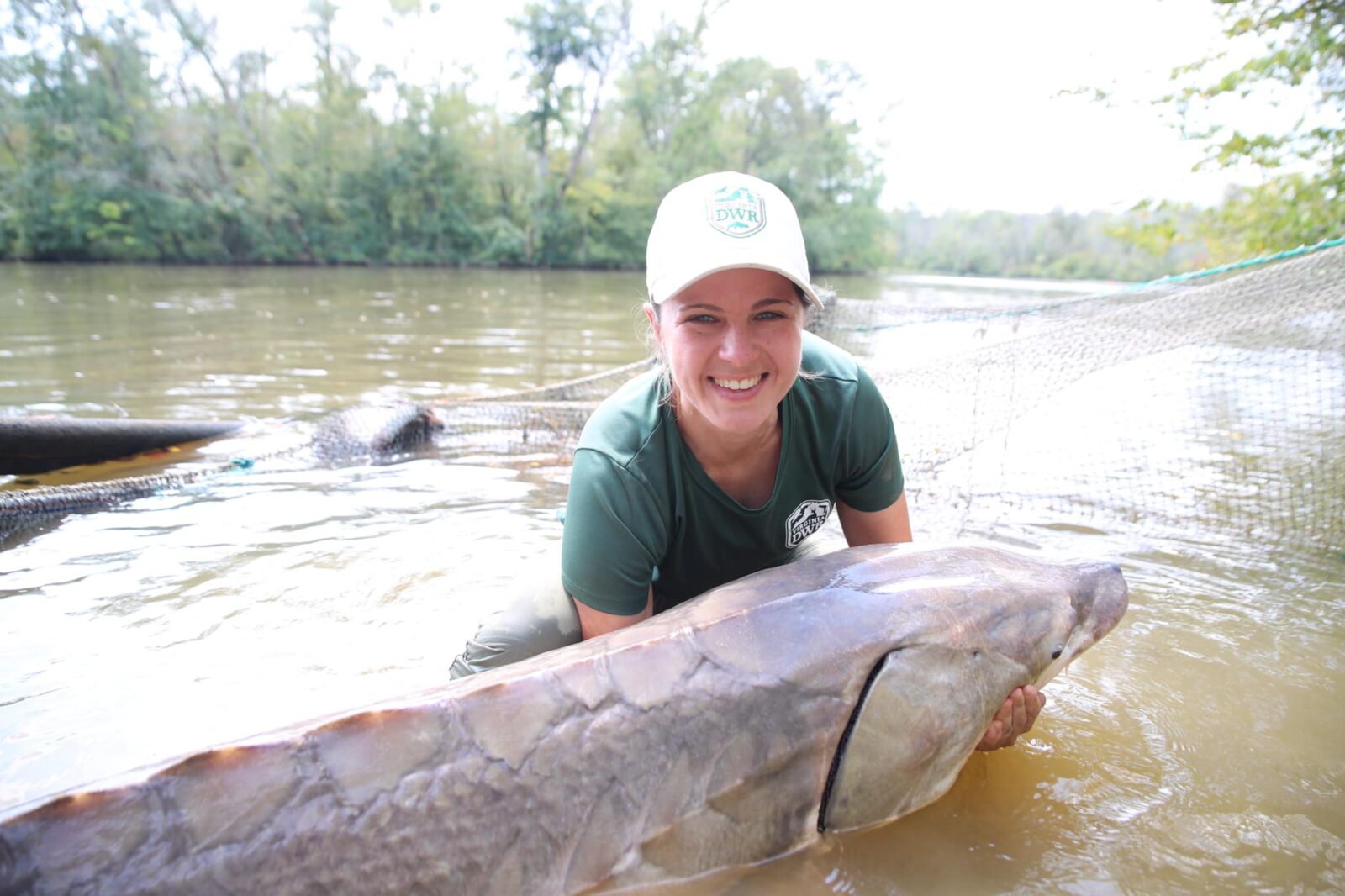By Molly Kirk/DWR
Each spring on the James River, the impact of the Endangered Species Act can be seen as massive, prehistoric-looking fish arc out of the water and splash back into it in dramatic breaching displays. The Atlantic sturgeon, once thought to be gone from Virginia’s rivers, has returned after decades of dedicated work to restore water quality and habitat thanks to protections of the Clean Waters Act and the Endangered Species Act.
Atlantic sturgeon were once plentiful in Virginia’s tidal rivers, and were an essential source of food for Native Americans and colonialists. Indeed, the species was said to have been the food source that saved the Jamestown residents in 1607. But rampant over-fishing in the 19th century depleted Atlantic sturgeon populations just as pollution from industry decimated their habitats. Sturgeon all but disappeared from Virginia’s rivers in the early 20th century. The species was added to the Endangered Species list in 2012, but regulations that sought to protect this fish were beginning to be put in place even before that. The Clean Water Act of 1972 helped restore water quality in the tidal rivers. Virginia banned fishing for sturgeon in 1974, and then in 1990, the Atlantic States Marine Fisheries Commission enacted a Fishery Management Plan that called for re-building the populations.
By the late ‘90s, fisheries biologists were catching and tagging Atlantic sturgeon in Virginia’s rivers in a project initiated by now-retired Albert Spells of the U.S. Fish and Wildlife Service (USFWS). Now, a thriving network of government and private organizations are working to protect the Atlantic sturgeon in Virginia’s rivers, including the Virginia Commonwealth University (VCU) Rice Rivers Center, the James River Association (JRA), the National Oceanic and Atmospheric Administration (NOAA) Fisheries, and more.
Read more about recovery efforts for Atlantic sturgeon in “Ghosts No More,” an article in the March/April 2021 issue of Virginia Wildlife magazine.
“Having these partnerships allow us to take advantage of all these projects that are looking to answer questions about the species where our areas of research intersect. It’s been really helpful just having that information sharing,” said Margi Whitmore, tidal rivers fisheries biologist with the Virginia Department of Wildlife Resources (DWR).

DWR Tidal Rivers Fisheries Biologist Margi Whitmore with an Atlantic sturgeon. Photo courtesy of the York River Sturgeon Facebook page
DWR’s main role in protecting sturgeon is overseeing the permitting of infrastructure projects that might impact the species, as designated by the Endangered Species Act. “Any infrastructure project that comes through, we have to take sturgeon habitat impacts into consideration. It’s just another level of protection—we have to consider them in everything that we’re doing in the water,” Whitmore said. DWR looks to research by VCU and NOAA’s tagging programs when evaluating projects. “The tagging work they’ve done is a really heavy lift, and they’ve been doing it for so long. The more you can collaborate on those projects, instead of having redundant projects, the better.
“Those protections, which help keep sturgeon habitat and spawning areas safe, along with general improvement in water quality and habitat over time, is going to help all fish in a waterway,” Whitmore said. “I think that collective effort that we’ve been putting toward improving water quality and habitat for all our anadromous fish has definitely contributed to increased spawning and populations of sturgeon.”
Another important piece of the Atlantic sturgeon’s rebound has been public support. Sturgeon aren’t cute, or fuzzy. They’re intimidating in appearance with bony plates, very large—usually more than five feet long—and rarely seen. But organizations such as VCU Rice River Centers and JRA have worked hard to get the public engaged with the sturgeon’s plight. “They’ve done great outreach and education,” Whitmore said. “By really spotlighting the species and making it a charismatic mega-fauna of the region, people got excited about and engaged in its recovery. That amount of public support can’t be understated for a recovery effort like this.”


